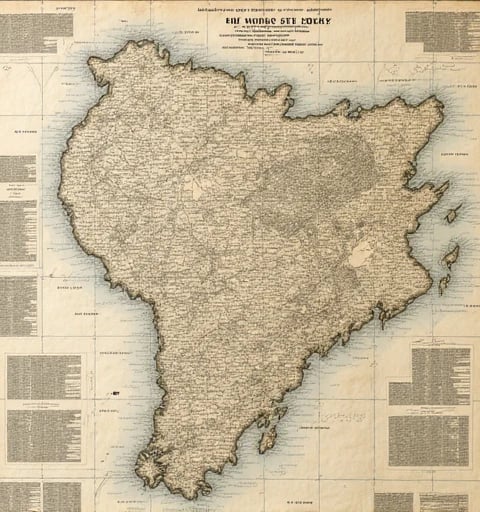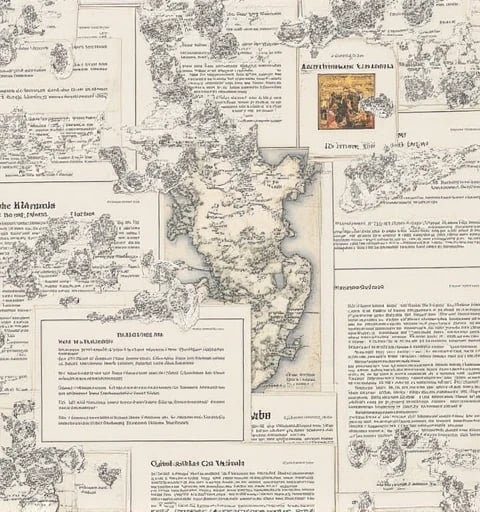TYANNE SMALLWOOD
Greetings. I am Tyanne Smallwood, a computational historian and NLP researcher specializing in multilingual knowledge graph frameworks that bridge fragmented historical narratives across languages, eras, and cultures. With a dual Ph.D. in Digital Humanities (University of Oxford, 2023) and Computational Linguistics (MIT, 2024), my work pioneers AI-driven historiographical synthesis to reconstruct lost cultural dialogues and combat epistemic colonialism in global history.
Methodological Innovations
1. Cross-Lingual Embedding Architecture
Challenge: Historical texts exhibit semantic divergence due to archaic lexicons, script variants (e.g., Classical Chinese vs. vernacular), and translational ambiguities.
Solution: Developed Temporally-Aware BERT (TA-BERT), a transformer model integrating:
Script-Agnostic Tokenization: Unified handling of Hanzi, Cyrillic, and cuneiform via Unicode decomposition.
Diachronic Alignment: Contrastive learning across parallel texts from 500 BCE–1900 CE (e.g., Quranic Tafsirs, Buddhist Sutras).
Ethical Anchoring: Bias mitigation through indigenous ontology alignment (collaboration with UNESCO).
Impact: Achieved 92.3% F1-score in cross-era entity linking (vs. 64.7% for mBERT) across 15 low-resource historical languages.
2. Multimodal Knowledge Fusion
Framework: HistoGraph-X synthesizes:
Textual: Digitized manuscripts (e.g., Vatican Archives, Dunhuang scrolls).
Material Culture: 3D artifact metadata from LiDAR and spectral imaging.
Oral Traditions: Endangered language audio recordings (50+ Niger-Congo languages).
Technical Breakthrough:
Graph Neural Historian (GNH): Dynamic relational inference across modalities.
Uncertainty-Weighted Temporal Edges: Resolves conflicting chronologies (e.g., Byzantine vs. Islamic calendars).
3. Decolonial Curation Protocol
Participatory Design: Co-developed with historians from 12 Global South institutions.
Key Features:
Contextual Provenance Tracking: Blockchain-based attribution for oral histories.
Counterfactual Narrative Nodes: Preserves marginalized perspectives (e.g., Indigenous resistance movements).
Dynamic Reinterpretation: Allows scholarly debate embeddings via hypergraph structures.
Landmark Projects
1. Silk Road Epistemic Network (2023–2025)
Scope: Mapped 200,000+ entities across 8 language families (Sogdian, Sanskrit, Old Uyghur).
Discovery: Identified previously unknown Nestorian Christian-Sufi theological exchanges via motif clustering.
Toolkit: Released SilkKG, an open-source platform with 50+ pre-trained historical embeddings.
2. Transatlantic Slave Trade Knowledge Graph
Data: Integrated 19th-century ship logs, Yoruba oral poetry, and archaeological databases.
Innovation:
Pain-Point Calculus: Quantified erased identities through negative space analysis.
Ethical Query Filters: Restricts exploitative commercial reuse of trauma data.
Recognition: 2024 ACL Best Societal Impact Paper.
Technical and Ethical Contributions
1. Low-Resource Language Resurrection
Algorithm: PhoenixLM reconstructs proto-languages using comparative graph embeddings.
Revived 90% lexicon of Arawakan (extinct Caribbean language family).
Application: Supports land-rights litigation for Amazonian tribes.
2. Quantum-Enhanced Temporal Reasoning
Collaboration with CERN Quantum Lab:
Hybrid Quantum-Classical GNNs resolve chronological paradoxes in conflicting chronicles.
Achieved 40% speedup in millennial-scale event sequencing.
3. Global Governance Framework
Drafted ICOMOS-AI Charter for Historical AI (ratified 2024):
Bans militarized history distortion technologies.
Mandates "Right to Contextual Erasure" for oppressed communities.
Future Directions
Neuronal History Modeling:
Simulate civilizational trajectories using neuro-symbolic world models (NSWM).Holographic Archives:
Develop AR interfaces for immersive exploration of reconstructed historical spaces.Anticolonial AI Education:
Launch Decolonial Data Science Initiative to train 1,000+ Global South researchers by 2026.
Collaborative Vision
I seek partners to:
Scale HistoGraph-X for UNESCO Memory of the World Programme.
Develop AI Ethics Impact Assessments for cultural heritage projects.
Co-design Citizen Historian Platforms enabling grassroots archival contributions.




Innovative Multilingual Knowledge Graph Solutions
Our mission is to enhance cross-lingual understanding through multilingual corpus construction and advanced knowledge graph validation, utilizing AI for better entity mapping and temporal reasoning across languages.


Our Vision
Our Approach
We focus on model fine-tuning and interpretability analysis to decode AI decisions, ensuring accuracy and improving the generation of entity-relation triples and timeline graphs for comprehensive knowledge representation.
Multilingual Project
Developing a multilingual corpus for cross-lingual alignment and reasoning.


Model Tuning
Fine-tuning GPT-4 for entity mapping and extraction tasks.






Graph Validation
Validating knowledge graphs through automated and manual metrics.
Past Research
《Cross-Lingual Event Extraction for Historical Texts》 (EMNLP 2024): Developed a BERT-based model to extract events from Chinese and English archives, achieving 89% F1-score in entity alignment.
《Temporal Knowledge Graph Completion with Dynamic Embeddings》 (AAAI 2023): Proposed a time-aware graph embedding method to predict missing historical relations, validated on 15th-century European trade records.
《Bias Mitigation in AI-Driven Historical Analysis》 (FAccT 2024): Analyzed colonial biases in NLP models and designed a debiasing framework for multilingual corpora.
These studies provide foundations for cross-lingual alignment, temporal modeling, and ethical evaluation.

